In today’s
world, the common belief is that the studies of zoology and medicine are vastly
different and separate entities.
Zoologists deal with the fuzzy and creepy, crawly organisms that live in
the jungle and deserts of the world, while medicine is the resident of the
laboratory and the hospital. They rarely
cross, usually only when a human is attacked by a carnivorous beast or is
bitten by a poisonous snake or spider.
At least that is the common idea.
The truth, however, is vastly different, with the lines being blurred more
and more every day. As science improves
and more discoveries are made, those organisms that we think are only useful in
zoos or in classes have been instrumental in almost all important medical
advancements of the past century and beyond.
What follows is a Top Twenty List of such organisms, without which many
lives would have been lost and which are providing hope for a brighter and
healthier tomorrow.
20. Guinea pig
(Cavia porcellus)
The practice of
calling someone a “guinea pig” in a study common-place today, but this
distinction is well deserved. The furry
critters have been a significant test subject for several Noble prize-winning
scientists and in countless medical discoveries (including aiding in testing
the vaccine for polio, a potent antitoxin for diphtheria, an upper respiratory
tract disease resistant to various types of antibiotics, along with many of the
first discoveries of how phagocytes and immunity functioned).
19. Rats (Rattus
norvecus), mice (mus musculus)
Another laboratory
standard, rats and mice have become the stereotypical research animal. However, this is quite well deserved, as both
organisms have been used for experimentation and testing that has led to
vaccines and treatments for countless diseases (yellow fever vaccine, tumor
producing viruses and cancer treatments, polio vaccine, cholesterol
regulation). Rats and mice have provided
a model of the human body and a practical way of testing the impacts of
diseases on the main body systems (endocrine, nervous, cardiovascular,
muscular) for years, being affected by the same diseases as humans and showing
how genes can be manipulated to alleviate these diseases.
18. Domestic horses
(ex. Equus ferus)
Most
nonscientists believe that urine is just urine.
However, the urine of horses possesses an interesting quality- it
contains forms of estrogen that can be mixed with other estrogen-like compounds
to form a drug that acts as hormone replacement therapy in women. This drug (called Premarin) is extracted from
the urine of pregnant mares and has been shown to be effective at reducing the
symptoms of menopause and the similar symptoms of women who have had a
hysterectomy. The drug has also been
studied for reducing the risk of osteoporosis and the chances of heart disease
in women. However, the farms that are
the main producers of this have come under fire from animal rights groups for
keeping the mares in inhumane conditions, putting a blight on an otherwise
beneficial advancement.
17. Hard shell
clams (ex. Mercenaria mercenaria)
While clams are
not known other than being omnipresent on every sea food menu of all time,
clams were the perfect creature to test a medical innovation that has saved
countless lives- the Magnetic Resonance Imaging (MRI) scan. While Paul Lauterbur had completed the
mathematical formulas for creating images with MRI, he still had viable way to
test the discovery on a living creature, as his apparatus was too small for a
rat or human. However, a clam worked
just fine, and with a successful scan of clams from nearby Long Island Sound, a
new and improved MRI scan became available for the viewing of the brain and
cancer, among other diseases.
16. Atlantic
squid (Loligo pealei)
The brain is a
complex organ, filled with nerves relaying impulses to all regions of the
body. The mechanisms controlling this
phenomenon puzzled scientists for years.
That is until Thomas Huxley and Alan Hodgkin studied nerves of this organism,
and developed a hypothesis for nerve impulses.
Using the giant axons of the squid, nerves were discovered to possess
electrically charged ions, and the shifting of these ions in the nerve caused
the impulses necessary for action. This
discovery led to new breakthroughs in neuroscience and a greater understanding
of muscle function, with electrotherapy
for injuries and also using pacemakers to regulate heartbeat and defibrillators
to restart the heart through an electrical charge mimicking the pulses.
15. Blow flies (ex.
Lucilia sericata, L. illustris. Phormia regina)
In the surgical
camps of World War I, soldiers coming in with gangrenous wounds normally were
in so bad shape they could not be saved or would lose whatever body part in
which they were wounded, but a startling discovery helped reverse this. Wounds filled with maggots of the blow fly
were often cleaner and less infected than non-infested wounds, leading to a new
medical practice- maggot therapy. While
disgusting to think of for many people, maggot therapy leads to great
possibilities for the treatment of infections resistant to antibiotics,
including treating infected ulcers on the feet of diabetes patients and also
MRSA sores on the body. This innovation
has saved numerous lives and limbs for patients where surgery was not an
option.
14. Frogs (ex. Hyperolius
mariae)
Frogs are
well-known as bioindicators for the environment, being the first organisms hit
in a polluted ecosystem. As amphibians,
a frogs skin depends on a moist environment to remain healthy, and because this
skin is thin for the diffusion of moisture, pollutants can devastate frog
species rather quickly. This fact has
led to many studies testing the effects of chemicals, including pesticides,
medications, and industrial and sewage runoff, along with many others, on the
environment. One of the most famous studies
in the last few years was the atrazine research of Dr. Tyrone Hayes, proving
the compound was extremely detrimental to frog species, causing them to develop
eggs in testes, and leading to the subsequent ban of the compound in
Europe. Frogs are the first responders
to an environmental threat.
13. Fruit fly
(Drosphila melanogaster)
The common fruit
fly is well-known for expanding modern scientists understanding of genetics,
with almost sixty-one percent of disease genes found in humans have a similar
match in the fruit fly. This fact (along
with the ability for multiple generations to be formed rather quickly) allows
fruit flies to be good substitutes for humans in the study of disease and how
the diseases could possibly affect them.
As artificial humans, fruit flies have been used for many scientific
breakthroughs in the past several years (including the study of genetic control
during embryonic development, and also a greater understanding of the human
olfactory receptor function).
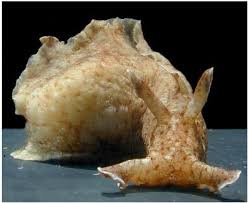
12. Sea slugs (Aplysia
californica)
The sea slug has
helped neuroscientists to learn more about the function of neurons than almost
any organism. The 2000 Nobel prize in
medicine and physiology was awarded to Dr. Eric Kandel for his work on the
differences between short and long term memory and how information is stored in
the nervous systems of these organisms and the similarities to the human storage process. Many insights into synaptic
plasticity and the effects of synaptic plasticity have also been made studying
the sea slug nervous system. The main
importance of the organism is the study of how dopamine affects synaptic
transmission for muscle movement in neurons, which could lead to a cure for
Parkinson’s disease if the mechanisms can be isolated.
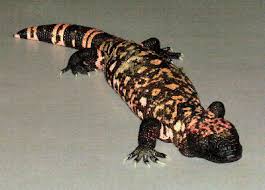
11. Gila monster
(Heloderma suspectum)
Diabetes,
especially Type-2 diabetes, is becoming more and more common in the world
today, especially in children and older adults who develop the disease over
time or are born with the disease. But
relief may be possible through the saliva of a common Southwestern reptile- the
Gila monster. The saliva in the reptile
produces a glucagon-like polypeptide that improves glucose homeostasis in
diabetes patients. This advancement
could be used to create an insulin-aiding drug that would allow diabetes
patients to balance their glucose levels and eliminate the dangerous spikes
that lead to comas and problems circulation and vision, giving diabetes patients
more freedom.

10. Pigs (ex. Sus
scrofa domestica)
With anatomy and
physiology similar to that of a human, pigs have been invaluable assets to
medical studies of serious diseases, including cystic fibrosis and retinitis
pigmentosa (a degenerative retina disease where the rods and cones of the
retina die causing impaired vision) and how the body would respond to
treatment. Pigs serve as quite accurate
models and have been instrumental in many breakthroughs, including how peptides
are produced in the brain and the development of the CAT (computer assisted
tomography scan) scan for creating pictures of internal body ailments such as
a cardiac infarction (heart attack) and cancer.
The full potential of pigs is more than likely nowhere close to being
fully reached.
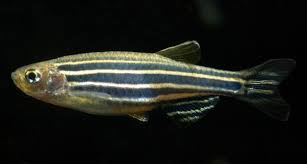
9. Zebrafish
(Danio rerio)
Zebrafish are a
species of fish common to the freshwater streams near the Himalayas, and
possess organ development similar to that of humans, allowing them to serve as
effective models for how disease will affect humans, but this is not their most
substantial contribution to medicine.
Zebrafish possess rapid regenerative abilities that function similarly
to the way embryonic stem cells function in humans. This allows a zebrafish to activate the
necessary genes for replicating a new limb with no scar or noticeable
differences. With the controversy
surrounding stem cell research from aborted fetuses, the possible alternative
of using zebrafish opens a new realm of possibilities. If the necessary genes can be isolated and
replicated, they could be inserted into the genetics of a human, allowing them
to physically regrow a lost limb or organ.
Military amputees, accident victims, or cancer survivors could all
benefit from this possibility, all stemming from the tiny zebrafish.

8. Chimpanzees (ex.
Pan trogodytes)
Chimpanzees are
rapidly disappearing from many African countries, as hunting and habitat loss
have taken a massive toll on the populations.
This is distressing for the loss of a species diversity in an important
area of the world, but most importantly for the fact that chimpanzees may hold
the key to eradicating HIV. Chimpanzees
and other similar apes develop a disease called SIV (Simian Immunodeficiency
Disorder) that is analogous to HIV. An
interesting note is a common theory is SIV mutated and crossed species barriers
to humans, becoming HIV-1 and HIV-2, the most common strains of the virus. Testing on infected chimpanzees could hold
the key to solving the global crisis of HIV, and hopefully produce a cure to
eventually eradicate the virus altogether.
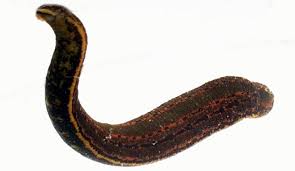
7. Leeches
(Hirudo medicinalis)
Leeches have been used for centuries in
medical procedures. This is mainly due
to one simple fact- they work well at what they do. Leeches possess an anticoagulant in their
saliva called hirudin that is an effective blood thinner, and if the
anticoagulant could be synthesized in large amounts, it could be used as a high
blood pressure medication, as a hemorrhoid cure, or to reduce the severity of
contusions in regions of high blood flow.
Leeches are also instrumental in the success of skin transplants, where
the leeches break up clots that impede the joining of the skin grafts to the
body surface. If a drug could be
synthesized from leeches to accomplish this task, then a simple IV drip could
keep a skin graft or even limb re-attachments from being rejected.

6. Rhesus macaque
(Macaca mulatta)
Along with
insights into human behavior and cloning, the commonly known Rhesus monkey has
provided an important insight into human blood.
The most notable of these is the presence of an Rh factor in the blood
of both the monkey and humans. Indicated
by Rh+ if the factor is present and by Rh- if the factor is not present, the
determination of this factor has allowed for the success rate of transfusions
and organ transplants to skyrocket.
Previously, blood was indicated by only the A, B, AB, O scale, and
rejections of blood were common and frustrated doctors. With the discovery of the Rh factor, blood
can be more accurately matched, improving the success rate of a potentially
life-saving procedure.
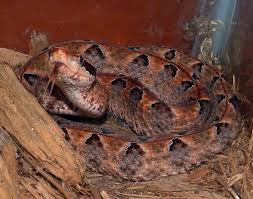
5. Malayan pit
viper (Calloselasma rhodostoma)
Cardiac
infarctions are caused by blood flow to a region of the heart becoming blocked
off, leading to a lack of oxygen and nutrients to the affected area and the
subsequent death of the surrounding tissue.
These occurrences are often deadly and affect numerous people all over
the world. But there is hope in the form
of a substance extracted from the venom of the Malayan pit viper- kistrin. Kistrin functions as a blood thinner and an
anticoagulant, beneficial to a viper trying to capture prey, but could be
life-saving for a heart attack victim.
Kistrin is also concentrated enough that it can be used in specific
areas without it spreading to other areas, allowing clots in the heart to be
broken up without potentially threatening necessary clots elsewhere in the
body, like for healing surgeries. With
kistrin, a heart attack “cure” is possibly within reach.

4. Vampire bat
(Desmodus rotundus)
Similar to
kistrin from the venom of the Malayan pit viper, the saliva of the vampire bat
holds vast potential for the breakup of clots, particularly stroke inducing
brain clots. The saliva contains an
enzyme called desmoteplase (DSPA) that is anticoagulant and allows blood to
flow more freely. This enables the
vampire bat to feed more without having to bite prey again, but would allow
humans to prevent strokes. By breaking
up clots, the partial paralysis or even death from a stroke can be avoided
through a simple medication. The DSPA has
also been synthesized into a drug currently undergoing clinical trials, ironically
called Draculin, which could be available for use sometime in the near
future.

3. Sponge (ex. Axinella
cannabina,
Acanthella
klethra)
Seemingly doing
nothing in marine habitats, other than filter feeding, sponges are actually
secret life savers- they produce several compounds (including axisonitrile-1,
and the various isonitrile and isothiocyanate variations) that are highly
antimalarial, reacting to kill the Plasmodium parasite responsible for
infecting humans, while still being safe for humans, especially pregnant
women. With malaria being one of the
deadliest diseases in the world, with over 300,000,000 people being affected
annually and over one million of these dying, a human-safe cure for malaria
would instantly improve the quality of life for a massive portion of the
globe. While these products are still in
testing for safety and effectiveness, further study could lead to more advances
and synthesis. If antimalarial compounds
exist and can be isolated, it is reasonable to believe there are more secrets
being hidden in these mysterious, simple organisms.

2. Sharks (ex. Squalus
acanthias)
Shark cartilage
has an interesting quality- if cancer cells form within the cartilage, the
cancer will not spread far, and is eliminated from the cartilage. This interesting adaptation has led to much
research with shark cartilage, resulting in polypeptides with anti-angiogenic
activity and amniosterols from liver isolations that are antibiotics for both
Gram-positive and Gram-negative bacteria, along with exhibiting anti-angiogenic
and anti-tumor properties. In clinical
trials now for the treatment of advanced non-small lung cancer, the
possibilities of these discoveries are phenomenal. If compounds can be isolated from the
cartilage to combat various types of cancer cells, cancer research would jump
forward at an astounding rate, allowing for more effective treatment and much
higher survival rates and a decreased chance of relapse. On an even grander scale, if the genes
responsible for cartilage developing anticancer defense mechanisms or for the
synthesis of the compounds could be found and then artificially implanted
within humans, the body would be able to naturally fight off cancer like
fighting off the common cold. The
possibilities are endless with the right research.

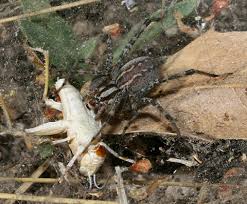
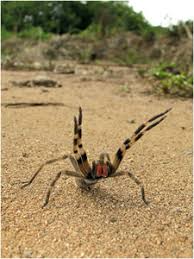
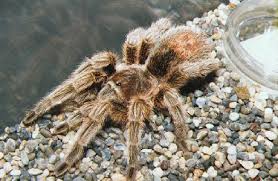
1. Spiders ( ex. Black
widow- Latrodectus genus, Funnel web spider- Atrax genus, Brazilian wandering
spider- Phoneutria genus, Chilean tarantula- Grammostola spatulata)
Spiders are often the
subject of pathological fears and the first organism to be killed when seen,
but these creepy organisms hold nearly limitless potential. Spider venom is a highly developed neurotoxin
with numerous health benefits. Female
Black widow spider venom contains a peptide that helps in the building of
protein, which could be used to treat Alzheimer’s patients. The venom of the Funnel web spider is
currently being researched as a possible pain medication. The Brazilian wandering spider has a compound
that could possibly remedy erectile dysfunction. The Chilean tarantula has venom that blocks
ion channels in cells and prevents them from swelling, which is being used as a
possible preventative for atrial fibrillation.
Spider venom may also be able to limit stroke damage. And these are just a few of the thousands of
species of spiders that exist. If each
one could provide a benefit to humans on a similar magnitude, spiders would
become the newest scientific celebrity.
However, like many organisms on this list, they are being threatened by
habitat loss and pollution to where species diversity could be extremely
limited in the future and numerous species may be wiped out before they can be
utilized. Spiders are clearly the
unsung, ungratified medical distributors in science.
Amazing isn’t it? Organisms many people refuse to even look at
due to an unconscious fear are actually the greatest life-savers in the
world. The possibilities for new
techniques, drugs, and therapies are endless and absolutely mind-boggling. Think of all of the lives that could be
changed through the eradication of cancer, HIV, and malaria. The entire world would change through these
advancements, giving many developing and struggling countries the rare chance
to regain their footing in the world and begin to prosper. The economic benefits would also be nothing
to scoff at, with pharmaceutical companies having new drugs to sell that could
actually be marketed cheaply and effectively (some of the aforementioned
anticoagulant drugs from spider and Malayan pit viper venom having the
possibility of being the same price as an aspirin) as miracle drugs, leading to a tidy profit. This should have companies sending biologists
to the field in droves, but unfortunately this is not the case. All over the world, organisms holding the key
to illnesses and advancements to benefit humanity are being wiped out before
even being discovered, as habitat loss for urban development and farming and
rampaging pollution drive the organisms over the edge without so much as a
whimper to mark their end. Species
diversity is slowly developing inoperable internal wounds that will lead to a
full collapse in the future. Unless
immediate conservation efforts are taken, soon the world will become nothing
more than a shell of its former self, with humans being nothing more than disease
ravaged, weakened shells. But this will
not come to be if the benefits, medical or otherwise, of the wide-range of
organisms throughout the biosphere are found and utilized, before it is too
late.